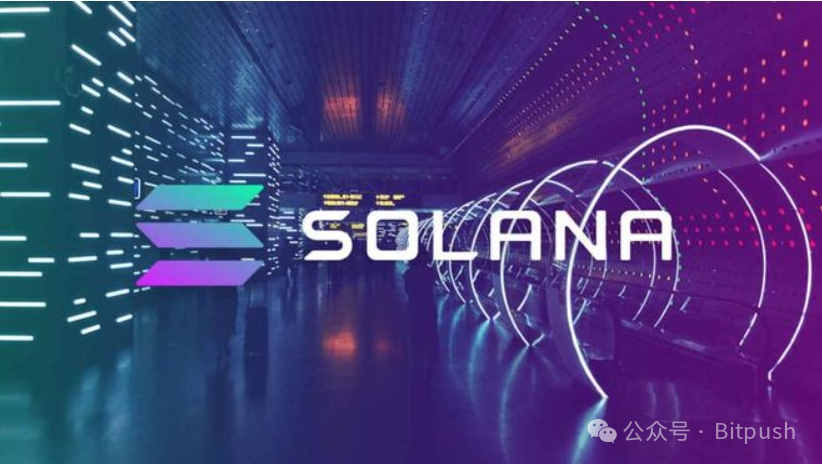In March of this year, the news of "SolanaEVM solution Eclipse receiving $30 million in financing" caused dissatisfaction from Sei founder Jay, who questioned its excessive hype and the difficulty of implementing the ecosystem. This led to further discussions by Eclipse founder Neel Somani, Fantom founder AC, and others, making "parallel EVM" the focus of the community. Along with the recent launch of the hot project ZEUS, the parallel narrative has once again undergone new changes. So, what is parallel EVM? What new changes are there in the parallel narrative? How will the future development of parallel blockchain narratives unfold?

What is parallel EVM?
Although parallel EVM has gained some popularity in the community before, it is difficult to say that it has truly become a technology well-known and clear to the public. So, what exactly is parallel EVM? What is the significance of the emergence of parallel EVM?
"Parallel EVM" can be seen as the technical integration of "parallel + EVM compatibility," which is an optimization of the existing EVM network execution layer. Essentially, it is a specialized optimization of the performance of various components of EVM to increase the number of transactions processed by the network per unit of time (TPS) or computational workload, addressing the current inefficiency problem caused by the sequential execution of transactions in EVM. Parallel EVM hopes to effectively manage the synchronous processing of transactions in each zone or group through scheduling algorithms by partitioning or grouping all pending transactions, with the ultimate goal of allowing multiple independent transactions to be executed in parallel, thereby improving the overall transaction execution efficiency of Layer1 network.
In blockchain, parallel execution means processing unrelated transactions simultaneously, such as partitioning or grouping transactions on the chain, such as DEX, NFT, GameFi, etc., so that they can be executed independently in parallel. This also means that different transactions can be executed on different processing units simultaneously, rather than being queued for processing in chronological order, greatly improving efficiency. High-performance platforms like Solana's SVM and Aptos's STM have adopted similar parallel execution processing logic.
The necessity of parallel EVM (Ethereum Virtual Machine) lies in its ability to significantly improve the performance and efficiency of blockchain networks. Traditional EVM processes transactions sequentially, which not only consumes a large amount of energy but also imposes a heavy burden on network validators. This processing method usually leads to high transaction costs and inefficiency, which is considered a major obstacle to the widespread adoption of blockchain. Parallel EVM, by allowing multiple operations to execute simultaneously, fundamentally changes the consensus process. The ability for parallel execution greatly enhances the network's throughput, thereby enhancing the overall performance and scalability of the entire blockchain.

What are the technological innovations of the leading parallel SVM, ZEUS?
Essentially, parallel EVM is mainly aimed at significantly improving the performance and efficiency of blockchain networks through parallel technology. From this perspective, ZEUS's technology is very similar to this. However, ZEUS aims to achieve parallel communication between Solana and Bitcoin through an open communication layer. Strictly speaking, ZEUS is different from parallel EVM, but essentially, it belongs to the parallel narrative, aiming to improve the performance and efficiency of the Bitcoin network through SVM. So, how does ZEUS achieve parallel communication between Bitcoin and Solana through technology?
ZeusNetwork consists of Zeus nodes and the Solana Virtual Machine (SVM). Zeus nodes include peer-to-peer communication, signing, broadcasting, validator registration, and a dual-purpose registry service that can run on-chain and off-chain. The Zeus communication mechanism allows nodes to exchange information, synchronize states, and execute transactions with each other without the need for centralized intermediaries, contributing to the decentralized and efficient operation of the network. When individual users want to become Zeus validators, they need to run a node and retain a private key for signing. In ZeusNetwork, the network validation process adopts a decentralized and permissionless group mode, which means that anyone can become a validator without being restricted by specific institutions or organizations. However, becoming a validator node requires staking SOL or LSD-SOL. Zeus encourages users to use LSD-SOL, which can participate in PoS staking to earn rewards. SVM plays a crucial role in ZeusNetwork by providing peer-to-peer communication services and state-related program elements.
Zeus consensus is the core of ZeusNetwork. In Zeus consensus, transactions from Bitcoin and Solana are first serialized and then systematically stored in the management program, providing validators with a centralized starting point to access and verify transactions. Validators in ZeusConsensus focus on validation work and do not participate in on-chain transactions. To further improve efficiency, ZeusConsensus implements a threshold signature mechanism. In Bitcoin, this involves Taproot and Schnorr signatures, while in Solana, it is the Ed25519 signature algorithm. At the same time, off-chain signatures are aggregated and broadcast to Solana. Off-chain signature aggregation allows for improved broadcast efficiency of transactions without sacrificing security.

How will parallel SVM impact the Ethereum ecosystem?
Parallel EVM was once considered an important technology to save Ethereum, and the market has great expectations for the parallel narrative. 0xTaker, co-founder of Aori, said, "Parallelization provides a way to minimize state contention through local fee markets." JD, former founder of Polygon, stated that in 2024, every L2 will be labeled with "parallel EVM" and rebranded. ReforgeResearch even published an article stating: Only parallel EVM can save Ethereum. The emergence of parallel EVM is an important turning point in the evolution of blockchain technology. By achieving simultaneous transaction execution and optimizing state access, parallel EVM has opened up a new era full of possibilities for decentralized applications. From the revival of programmable CLOB to the emergence of more complex and higher-performance applications, parallel EVM has laid the foundation for a unified and user-friendly blockchain ecosystem. The emergence of parallel EVM has the potential to reshape the landscape of decentralized applications and user experience. By addressing the scalability and performance limitations that have hindered the growth of key verticals such as DeFi, parallel EVM provides the possibility for the future development of complex high-throughput applications without sacrificing the "trilemma."
MTCapital released a research report stating that developing parallel EVM is seen as a key step in addressing the fundamental limitations of blockchain scalability. These innovations are expected to prepare blockchain networks for the future, enabling them to keep up with the growing demand and become the cornerstone of the next generation of Web3 infrastructure. Although parallel EVM offers tremendous potential, its successful implementation requires overcoming complex technical challenges and ensuring widespread ecosystem adoption.
However, with the emergence of ZEUS, the parallel narrative is actually undergoing changes. From the perspective of capital inflows, cryptocurrency market funds continue to flow into the Bitcoin ecosystem. After the hot development of Ethereum Layer 2, Bitcoin Layer 2 has gained market attention. According to defillama data, Merlin's funds inflow has increased by 6254% in the past month. In addition, other well-known Bitcoin Layer 2 projects have also received a lot of market attention. ZEUS aims to extend the parallel EVM narrative to the Bitcoin ecosystem by establishing an open communication layer connecting Solana and Bitcoin.
Conclusion
Initially, the parallel narrative was mainly focused on solving Ethereum's transaction performance and efficiency issues, but with the development of the Bitcoin ecosystem, the parallel narrative has also begun to expand into the Bitcoin ecosystem. Angel investors behind ZeusNetwork include Anatoly Yakovebko, co-founder of SOLANA, and Muneeb Ali, co-founder of Stacks. In the future, ZEUS may open up a new parallel narrative for the Bitcoin ecosystem. However, compared to this, the parallel EVM narrative of Ethereum may still have the potential to break through first.
免责声明:本文章仅代表作者个人观点,不代表本平台的立场和观点。本文章仅供信息分享,不构成对任何人的任何投资建议。用户与作者之间的任何争议,与本平台无关。如网页中刊载的文章或图片涉及侵权,请提供相关的权利证明和身份证明发送邮件到support@aicoin.com,本平台相关工作人员将会进行核查。




